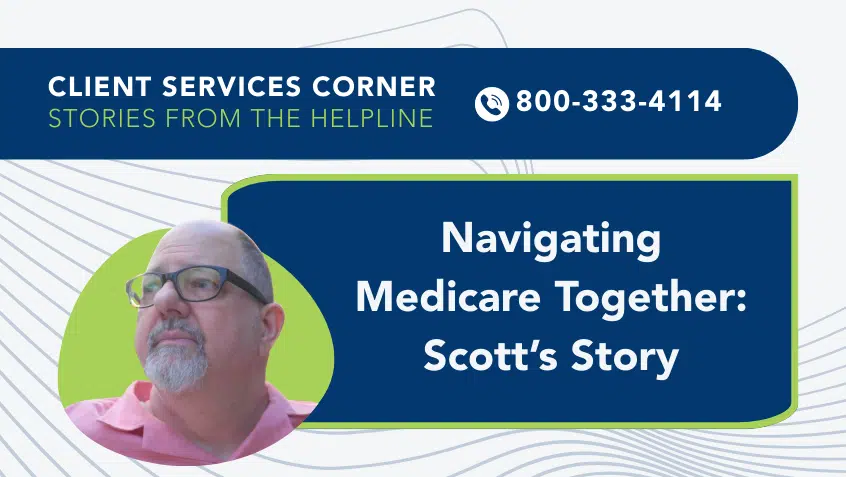Join Us Live for a Discussion on Medicare, Democracy, and the Future of Health Care
New Models May Tweak how Medicare Works, but Beneficiaries Must Remain the Priority

The Centers for Medicare & Medicaid Services (CMS), the agency that oversees the Medicare program, released information about eight new payment and delivery models this week. Five of these models, collectively known as the CMS Primary Cares Initiative, will test new ways to pay Medicare primary care and other providers while the other three would explore ways for Medicare and Medicaid to better work together to provide coverage.
The five new payment model options are divided into two paths. The first is a set of two Primary Care First Models that will pay primary care practices through what is called “capitation”—a set fee per person, per month to provide care. Historically, capitation-type payment arrangements can create problematic incentives that encourage providers to stint on care. For example, since practices may be able to maximize profits by delivering fewer services, they may be tempted to withhold necessary care. But the new Primary Care First models may reduce some of this incentive by including flat fees for primary care visits, and by offering providers bonus payments for keeping their patients healthy. Practices that could not keep costs down or keep patients healthy and at home would be at risk of losing some of their profits.
One of the Primary Care First models will focus on general primary care for all beneficiaries, while the other, called Primary Care First—High Need Populations, will be targeted at people with Medicare who are seriously ill and who currently lack a primary care practitioner and/or effective care coordination. This targeting is to encourage practices to take on these patients.
The three remaining primary care-focused models, the Direct Contracting Models, are also based on capitated payments for care for chronically and seriously ill patients. This initiative is intended to broaden participation in CMS’s efforts to test and develop risk-sharing arrangements in Original Medicare. To encourage provider involvement, the models will allow practices to share greater portions of the profits and risks of capitation models while also allowing the practices to provide services that are normally not available through Original Medicare. Participating practices will have to meet certain quality targets but would have less paperwork than non-participating providers. The three models are distinguished by the size of the practice and the scope of the population the practice must handle.
In a separate announcement, CMS highlighted three new ways states can participate in models that could make Medicare and Medicaid work together better. Around 12 million people are eligible for both Medicare and Medicaid—commonly called “duals” or “dual-eligibles”—but the systems do not always work seamlessly to provide care and coverage. These models are largely expansions of previous models that have tested capitation and managed care for duals in an attempt to hold down costs and allow a more integrated experience for beneficiaries.
With all of these payment models, keeping people with Medicare safe and healthy must be the priority. As discussed above, when capitation is the payment method, practices might be tempted to cut back on necessary services or handle far too many patients for their resources. This can lead to substandard care and lessen the well-being of the patients seeing those providers. Because of this risk, any model that attempts to change payments in this way must include rigorous CMS oversight of the participating practices to ensure the beneficiaries stay healthy and safe and that they are really benefiting from the model’s delivery system.
In addition, it’s important to remember that most of these models are for beneficiaries who have chosen Original Medicare. These beneficiaries must maintain their access to all Medicare providers, not only a network. We cannot support any model that would limit provider choice or access. These models must also not allow practices to market aggressively to beneficiaries, inappropriately steer them toward specific practices, charge more for Medicare coverage or balance bill, or engage in discriminatory practices.
By extending some additional benefits to people with Original Medicare, these models might take a small step toward parity with Medicare Advantage. We appreciate attempts to level the Medicare playing field, but we are very conscious that these models will not be available to, or appropriate for, everyone with Medicare. We encourage policymakers to ensure that all people with Medicare have access to the services they need, regardless of the coverage pathway they choose.
As always, we support efforts to make care better and more affordable, but it must not come at the expense of beneficiary choice or access to care. To ensure these and future models are thoughtfully designed and considered, we urge CMS to involve people with Medicare, their families, and advocates at every stage of the development and implementation processes.
Read more about the Primary Care First and Direct Contracting models.
Read more about the Dual-Eligible models.
Read our checklist of steps CMS must take to ensure models serve beneficiary needs.
Show Comments
We welcome thoughtful, respectful discussion on our website. To maintain a safe and constructive environment, comments that include profanity or violent, threatening language will be hidden. We may ban commentors who repeatedly cross these guidelines.
Help Us Protect & Strengthen Medicare
Donate today and make a lasting impact
More than 67 million people rely on Medicare—but many still face barriers to the care they need. With your support, we provide free, unbiased help to people navigating Medicare and work across the country with federal and state advocates to protect Medicare’s future and address the needs of those it serves.
The Latest
Most Read
Affordable Health Care in Jeopardy for Millions
Medicare Advantage Enrollees Have Until March 31 to Make Certain Coverage Changes
Analysis Flags Potential Medicare Advantage Access Issues for Mental Health Care
Rural Health Fund Awards Cannot Compensate for Enormous Medicaid Cuts that Threaten Home Care
Add Medicare to Your Inbox
Sign up to receive Medicare news, policy developments, and other useful updates from the Medicare Rights.
View this profile on InstagramMedicare Rights Center (@medicarerights) • Instagram photos and videos









